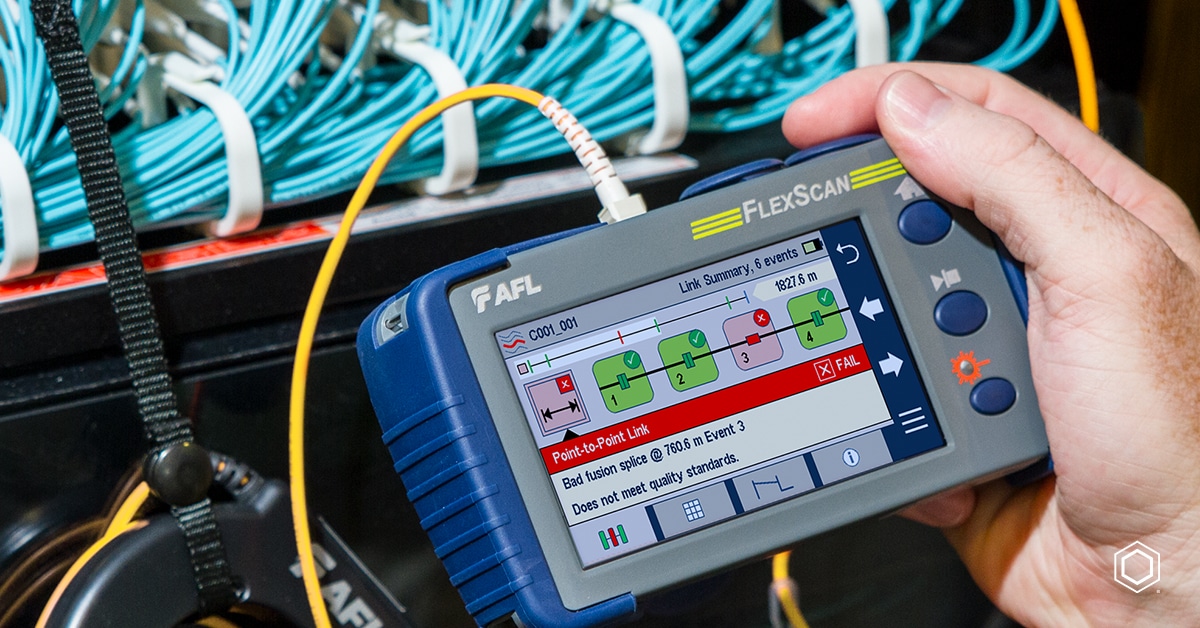Exploring the Benefits of Optical Fiber Testing for Boosted Interaction Equipments
The relevance of optical fibre testing in modern interaction systems can not be overstated, as it offers as a structure for guaranteeing network integrity and performance. Utilizing innovative techniques such as Optical Time-Domain Reflectometry (OTDR) and insertion loss analysis, organizations can not only identify mistakes however also maximize their configurations. This aggressive testing approach has extensive implications for signal top quality and functional efficiency, elevating the inquiry of exactly how these techniques contribute to lasting sustainability in an ever-evolving technological landscape. Understanding these dynamics is essential for stakeholders aiming to preserve an one-upmanship.
Importance of Optical Fibre Screening
The relevance of optical fibre screening can not be overstated in today's data-driven setting. As organizations significantly depend on high-speed information transmission for day-to-day procedures, the honesty and performance of optical fiber networks are paramount. Checking makes sure that these networks can support the substantial quantities of information produced and transferred perfectly, fostering effective communication and connectivity.
Optical fiber testing offers multiple essential functions, consisting of confirming installation quality, recognizing possible faults, and determining general system efficiency. Routine screening can stop pricey downtimes and solution disturbances, permitting companies to keep functional continuity. It helps in conformity with sector requirements and regulations, making sure that fiber optic setups meet needed requirements for security and dependability.
Additionally, testing can enhance the longevity of fibre optic systems. By proactively determining issues such as signal loss, depletion, or port failings, organizations can address problems before they escalate, hence expanding the life of their framework. In recap, optical fiber screening is not merely a technical need yet a critical financial investment that enhances network reliability, enhances performance, and inevitably sustains the development and effectiveness of modern-day communication systems.
Secret Evaluating Approaches

OTDR is an essential technique utilized to recognize faults, procedure splice losses, and assess the total honesty of a fiber optic web link. By sending out a pulse of light down the fiber and analyzing the shown light, professionals can pinpoint locations of mistakes and review the network's efficiency over fars away.
Insertion loss screening determines the quantity of signal loss that happens when light go through a connection or splice. This technique is essential for verifying that connections satisfy specified loss limits, which is necessary for preserving optimal efficiency in interaction systems.
Optical return loss testing measures the quantity of light mirrored back in the direction of the source as a result of imperfections in the fibre or links. High return loss worths indicate far better efficiency and reduced signal degradation.
Together, these testing methods give an extensive evaluation of fiber optic networks, guaranteeing their integrity and functionality in varied communication applications.
Influence On System Performance
Effective optical fibre screening directly influences the overall performance of communication systems. By guaranteeing the honesty of fibre optic cords, screening recognizes potential mistakes such as depletion, splice loss, and adapter imbalance. These issues can substantially deteriorate signal top quality, leading to interruptions and decreased information transmission speeds.

Furthermore, normal optical fibre testing adds to long-lasting system sustainability. It enables early detection of damage, permitting timely upkeep and upgrades prior to major failures occur. This not only prolongs the lifespan of the infrastructure but additionally makes certain that communication systems continue to be competitive in terms of efficiency.
Cost-Effectiveness and Effectiveness
Cost-effectiveness is a critical consideration in the implementation and maintenance of optical fiber networks. Implementing robust optical fiber screening procedures can significantly reduce functional prices by recognizing issues prior to they intensify into significant issues. optical fibre testing equipment. By finding faults, attenuation, and various other performance obstacles early, organizations can prevent expensive fixings and downtime, which can interrupt services and bring about revenue loss
Furthermore, effective testing techniques enhance the installment process, enabling service technicians to work better. This converts to reduce labour expenses and faster task completion times. Advanced screening devices, such as Optical Time Domain Reflectometers (OTDRs), enables a precise analysis of fibre quality, making sure that only ideal products are made use of, therefore decreasing waste.
Routine testing additionally adds to better resource allocation. By recognizing the network's efficiency, organizations can find out here make enlightened choices regarding upgrades and developments, ensuring that investments are made where they are most needed. In summary, optical fiber screening boosts cost-effectiveness and effectiveness, sustaining the lasting sustainability and competitiveness of interaction systems in a significantly requiring market.
Making Sure Long-Term Reliability
Applying rigorous optical fiber screening not only boosts expense savings and functional effectiveness yet also plays a crucial duty in guaranteeing the long-lasting reliability of communication networks. Constant testing practices, consisting of depletion and data transfer assessments, assistance identify prospective deterioration in fibre performance before it leads to solution interruptions.
By using innovative testing techniques, network operators can identify faults or weaknesses in the fiber framework, permitting prompt removal. This proactive technique decreases downtime, guaranteeing that communication systems remain useful and effective. Routine screening adds to the growth of a much more resistant network, as operators can adjust and enhance their facilities based on real-time data insights.
Additionally, making sure compliance with market standards via optical fibre dig this screening enhances the quality and stability of the entire communication system. This adherence not only strengthens confidence amongst stakeholders but also aligns with governing needs, which are significantly stringent.
Final Thought
To conclude, optical fibre screening functions as an essential component in boosting communication systems. By employing numerous testing methods, such as OTDR and insertion loss assessments, networks can accomplish ideal efficiency and dependability. The proactive recognition of faults not just enhances signal quality yet also minimizes downtime, ultimately contributing to cost-effectiveness and functional performance. Additionally, adherence to industry standards fosters stakeholder self-confidence, making sure the lasting sustainability of communication infrastructures in a significantly data-driven landscape.
Comments on “The optical fibre diameter analyser provides precise measurements for fibre optics.”